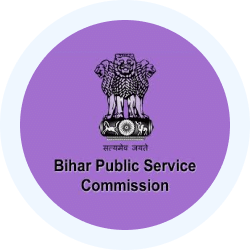Migration Class 12 Geography
| Table of contents |

|
| Migration |

|
| Causes of Migration |

|
| Consequences of Migration |

|
| Environmental Consequences |

|
Migration
Migration has played a significant role in redistributing India's population over time and space. The country has experienced several waves of migration from Central and West Asia, as well as Southeast Asia.
- Migration has been a part of demographic studies in India since the first Census conducted in 1881.
- The Census records migration based on two criteria:
- Place of birth, if it differs from the place of enumeration (referred to as life-time migrant)
- Place of last residence, if it is different from the place of enumeration (known as migrant by place of last residence).
Streams of Migration
- There are two types of migration - internal (within the country) and international (between countries).
- Internal migration can be classified into four categories:
- Rural to Rural (R-R)
- Rural to Urban (R-U)
- Urban to Urban (U-U)
- Urban to Rural (U-R)
- In 2011, the Census of India recorded 455.0 million migrants, out of which 141.9 million had changed their place of residence in the last ten years.
- Short-distance rural to rural migration is mostly related to marriage and females are the dominant group. On the other hand, males dominate the rural to urban inter-state migration, which is driven by economic reasons.
Spatial Variation in Migration
- States like Uttar Pradesh, Bihar, Rajasthan, etc. witness significant out-migration of people who move to other states such as Maharashtra, Delhi, Gujarat and Haryana.
Causes of Migration
- Two categories influence migration: push and pull factors. Push factors force people to leave their place of origin due to issues such as poverty, high population density, and lack of basic infrastructure. Pull factors attract people from underdeveloped areas to urban cities with better job opportunities, education, health facilities, and higher wages.
- Work and employment opportunities are the main reason for male migration (26%), whereas only 2.3% of females migrate for this reason. In India, about 67% of females move out of their parental homes after marriage, except in Meghalaya. In comparison, the percentage of male migration due to marriage is only 4% in the country.
Consequences of Migration
- The movement of people from one place to another is a result of unequal distribution of opportunities across different areas. This phenomenon has both advantages and disadvantages for both the places of origin and destination of the migrants.
- The effects of migration can be seen in various aspects such as economy, society, culture, politics and demographics.
Economic Consequences
- International migrants' remittances contribute significantly to the foreign exchange reserves.
- The states of Punjab, Kerala, and Tamil Nadu receive a considerable amount of remittances from their international migrants.
- Remittances are used mainly for purposes such as food, debt repayment, medical treatment, marriages, children's education, agricultural inputs, and house construction.
- For many poor villages in Bihar, Uttar Pradesh, Odisha, Andhra Pradesh, Himachal Pradesh, etc., remittances serve as a lifeline for their economy.
- The migration of people from rural areas of Eastern Uttar Pradesh, Bihar, Madhya Pradesh, and Odisha to the rural areas of Punjab, Haryana, and Western Uttar Pradesh played a crucial role in the success of the green revolution strategy for agricultural development.
- However, uncontrolled migration to metropolitan cities in India has led to overcrowding.
Demographic Consequences
- Migration results in the relocation of people within a nation and contributes to the discrepancy in gender proportion at both the migrants' origin and destination.
- Migration from rural areas that is selective in terms of age and sex has a negative impact on the demographic structure of those areas.
Social Consequences
- Migration has the potential to bring about social change as migrants can spread new ideas related to technology, family planning, and education from urban to rural areas.
- This can lead to the mixing of people from different cultures. However, migration can also have negative consequences, such as anonymity, which can create a social vacuum and a sense of dejection among individuals.
Environmental Consequences
- Rural-urban migration has caused overcrowding in urban areas, leading to strain on the available social and physical infrastructure. This has resulted in unplanned growth of urban settlements and the emergence of slums and shanty colonies.
- Moreover, urban areas are facing severe environmental problems such as depletion of groundwater, air pollution, inadequate sewage disposal, and mismanagement of solid waste, which are a consequence of the over-exploitation of natural resources.
Others
- The impact of migration on women's status can be either direct or indirect. In rural areas, male-selective outmigration often leaves wives behind, resulting in additional physical and mental pressure on women.
- Furthermore, the global skilled labor market has become highly competitive, with developed nations recruiting trained individuals from less developed countries.
|
171 videos|561 docs|207 tests
|
FAQs on Migration Class 12 Geography
| 1. What are the main causes of migration? |  |
| 2. What are the consequences of migration? |  |
| 3. What are the environmental consequences of migration? |  |
| 4. How can migration be managed effectively? |  |
| 5. What role does education play in migration? |  |
















